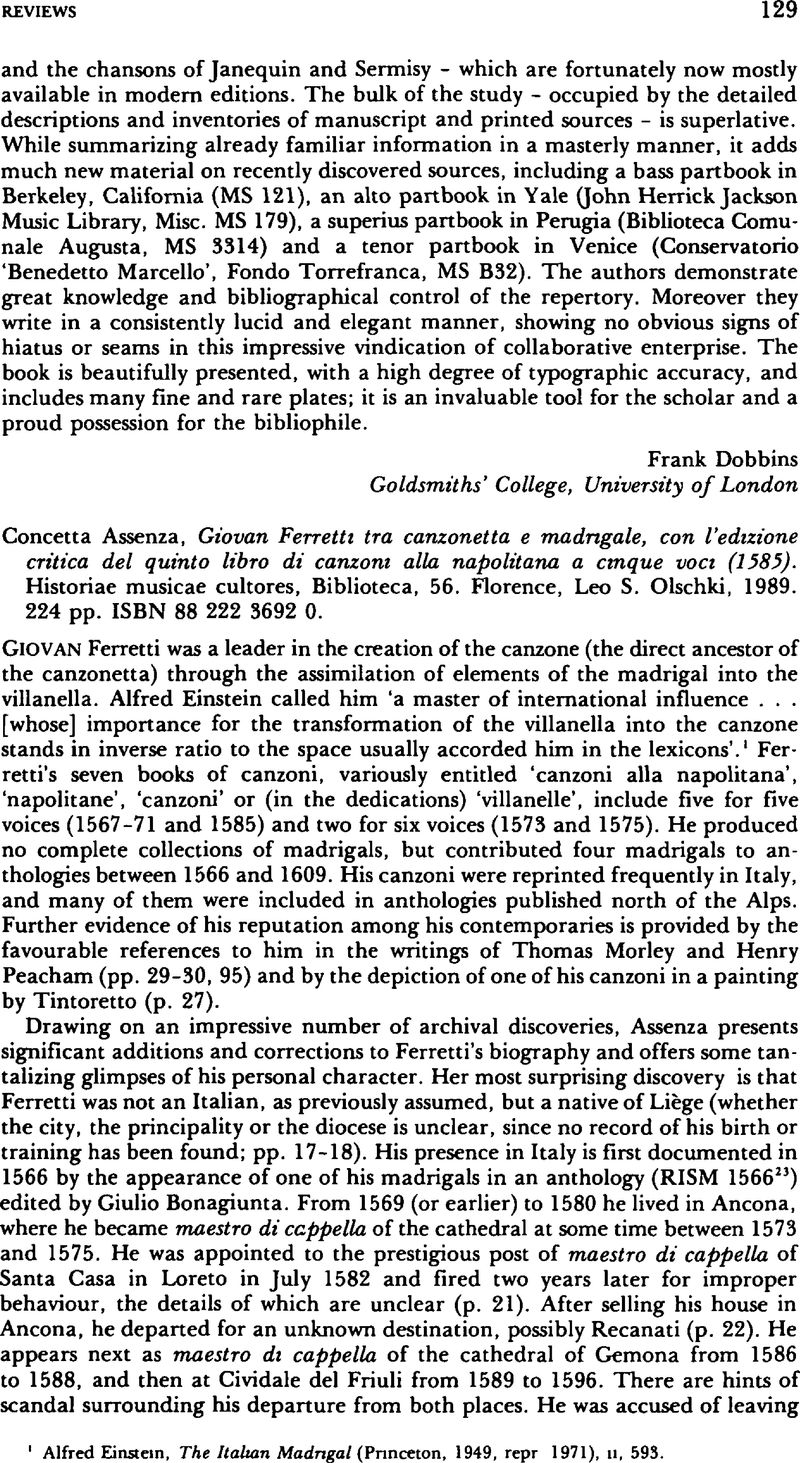No CrossRef data available.
Published online by Cambridge University Press: 01 January 2020

1 Einstein, Alfred, The Italian Madrigal (Princeton, 1949, repr 1971), ii, 593.Google Scholar
2 There are a number of madrigals based on villanella or canzonetta poems with two or more stanzas in one parte, but Ferretti was the only composer to use such texts in pieces called ‘canzoni alla napolitana’ See Ruth I DeFord, ‘The Influence of the Madrigal on Canzonetta Texts of the Late Sixteenth Century’, Acta musicologica, 59 (1987), 127–51 (pp 136 and 146–7)Google Scholar
3 Seven of these are found in Book 2 a6, two in Book 1 a6, and one each in Book 2 a5 and Book 5 a5 Multipartite settings are counted as single piecesGoogle Scholar
4 Ferretti, Giovanni, Il secondo libro delle canzoni a sei voci (1575), ed Ruth I DeFord, Recent Researches in the Music of the Renaissance, 57–8 (Madison, 1983), ixGoogle Scholar
5 With the aid of Emil Vogel, Alfred Einstein, François Lesure and Claudio Sartori, Il nuovo Vogel Bibliografia della musica italiana vocale profana pubblicata dal 1500 al 1700 ([Pomezia], 1977), and Harry B Lincoln, The Italian Madrigal and Related Repertories Indexes to Printed Collections, 1500–1600 (New Haven and London, 1988), these models can be identified quite easily Assenza's refusal to generalize about Ferretti's use of pre-existent materials on grounds that a survey of this topic would necessarily be incomplete (p 86) is puzzling Her statement that Ferretti's settings are sometimes musically unrelated to earlier settings of the same texts (ibid) is true only of Book 5 a5 It is not surprising that many of Ferretti's models have not survived, since villanelle often circulated orally, and many of them were never published Less than a third of the villanesche of the Willaert circle are based on surviving models, but Donna G Cardamone, The ‘Canzone villanesca alla napolitana’ and Related Forms, 1531–1510, Studies in Musicology, 45 (Ann Arbor, 1981), i, 180, regards most of the others as arrangements of lost piecesGoogle Scholar
6 Found in Ruggiero Giovannelli, Il primo libro delle villanelle et arie alla napolitana a tre voci (Venice, 1588), and Paolo Quagliati, Canzzonette a tre voci libro primo (Rome, 1588). Although these pieces were published later than Ferretti's, the five-voice versions were undoubtedly based on the three-voice ones, and not the other way aroundGoogle Scholar